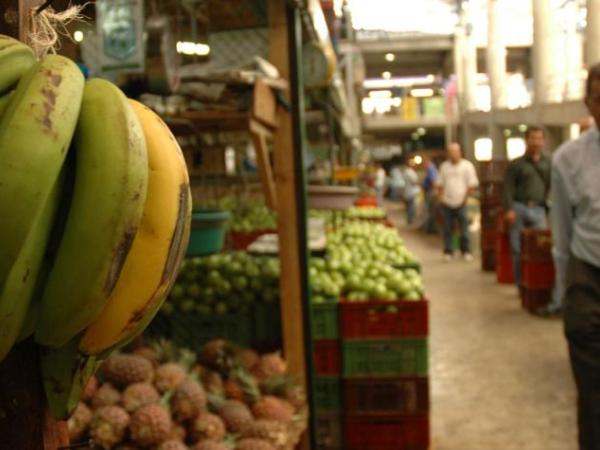The shot in prices has made many of the products and services on the market go up without a roof yet.
In the case of the sector of transportin which an increase in its basket of costs undoubtedly touches the value of products like foodhas caused it to become one of the great concerns of the Colombian economy, since these accumulate double-digit increases.
(See: What percentage of CO2 emissions is caused by agriculture).
However, the reason for this rise is basically supported by the increase in inputs that are necessary for the maintenance of the vehicle, in addition to the increase in salaries of helpers and drivers.
(See: The risks for the dairy sector due to the blockade on the Pan-American Highway).
According to the most recent report of the Road Freight Transport Cost Index (ICTC) of National Administrative Department of Statistics (Dane,) which makes it possible to measure the average price variations of a representative set of goods and services necessary to guarantee the mobilization of a vehicle that provides the service transport of road freight in the country, it was evidenced that as of December compared to the same month of 2021, there was an annual variation of 11.2% in the costs of the sector.
This figure was mainly marked by the item of inputs (20.6%), followed by the rise in fixed costs and tolls (16.1%), being one of the items that has affected the transporters the most, since it weighs 45 .1% in the basket of costs.
(See: How to mitigate the impacts of inflation in agriculture? The SAC responds).
In third place is the line of parts, pieces and maintenance services, which presented an increase of 10.7% and in fourth place, fuels that grew 3.2%. Regarding the latter, it is noteworthy that in January the rise would be significant in the price of this headingsince the value of diesel, which has not been touched by the Government, had a rise at the national level of $57 per gallonthis as usual every year due to adjustments inflationary.
However, by class, it is evident that paying for a vehicle and its leverage cost 41.7% more in December 2022 compared to the same period of the year 2021For example, tires increased their price 24%, lubricants 22.7%, filters 21.7% and insurance 13.9%.
On the other hand, labor has risen significantly, and in the last month of the year this increase reached 7.1%, one of the highest records in the year.
(See: Is it viable to produce bio-inputs in the country?).
Finally, in the case of tolls, the index registered an increase of 5.6%. Despite this increase, it is worth clarifying that at the beginning of 2023, the panorama was painted critical, since annually the price of the rate of this item increases a value close to or higher than inflation in 2022, however, the intervention and request of the trucking sector caused the Government to reassess the possibility of not raising prices to toll rates, which would mean the ICTC of the following month, it will maintain relatively stable increases in this item.
However, in the quarterly report of the DaneIntermunicipal Passenger Transport Cost Index (ICTIP), which makes it possible to measure the average price variations of a representative set of goods and services necessary to guarantee the mobilization of a vehicle that provides the inter-municipal passenger transport service in the country, registered an increase of 11.52% in the costs of a vehicle and in general for the provision of the service.
Among the most prominent, there is a substantial rise in the worth in the inputs of the passenger sector, a value that grew 20.9% in the period from October to December 2022 (fourth quarter) compared to the same period of the year 2021.
Following this item, is followed by the increase in fixed costs that increased 19.24%; then comes the class of parts, pieces, maintenance services and repair of the vehicle with a rise of 11.8%; tolls and use of terminals with an increase of 5.6% and finally the fuel category with a rise of 4.3%.
The first mention, was the cost group that contributed the most with 6.3 percentage points.
By classes, paying a vehicle transportation of people and its leverage has presented a growth of 40.2% compared to the same quarter of 2021, this above all due to spare parts such as tires that have risen between 23% and 24% annually.
Likewise, filters raised their prices 21.1% and lubricants 24.6%.
On the other hand, tolls have risen 5.6% and a fairly similar value for the use of terminals, which has grown 5.5%.
The workforce, which includes the analysis of the Payments made to drivers and helpers, registers as of December annually a increase of 9.4%.
Although these increases in the two subsectors have impacted the basket of costs, they hope that by 2023 prices will begin to drop, as they assure that these increases, which already include for the month of January, annual increases that are made in many of the products and services that useare not only impacting the final price of freight, but in turn, generating cost overruns in companies.
Despite the optimism, analysts project that by 2023 there will be inflation close to 8%, which will continue to impact the chain.
PAULA GALEANO BALAGUERA
PORTFOLIO JOURNALIST














